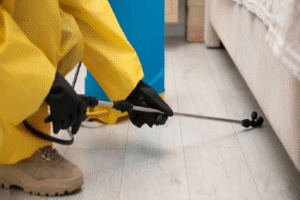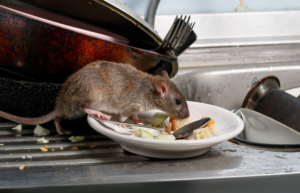Understanding the Life Cycle of Common Household Pests

Understanding the life cycle of common household pests is crucial for effectively managing and eliminating infestations in your home. Knowing the stages of development for pests such as ants, cockroaches, rodents, termites, and bed bugs helps in identifying the most effective control methods. Here, we’ll explore the life cycles of these pests and offer insights into how to manage them.
Ants
Ants are social insects with a well-defined caste system. Their life cycle includes four stages:
- Egg: Tiny, white, and oval-shaped, ant eggs are laid by the queen.
- Larva: After hatching, larvae are fed by worker ants until they grow enough to pupate.
- Pupa: In this stage, the ant undergoes transformation into its adult form.
- Adult: Ants emerge as either workers, soldiers, or reproductive queens. Workers and soldiers are sterile females, while the queen’s primary role is to reproduce.
Control Methods:
- Sanitation: Keep your home clean and free of food particles.
- Sealing Entry Points: Block entry points such as cracks and crevices.
- Baiting: Use ant baits to attract and poison the colony.
Cockroaches
Cockroaches are resilient pests with a three-stage life cycle:
- Egg: Encased in a protective ootheca, cockroach eggs hatch into nymphs.
- Nymph: These immature cockroaches undergo several molts, growing larger with each stage.
- Adult: Fully developed adults are capable of reproduction, perpetuating the infestation.
Control Methods:
- Sanitation: Regularly clean your home to remove food and water sources.
- Exclusion: Seal cracks and gaps where cockroaches can enter.
- Baits and Traps: Use cockroach baits and sticky traps to control populations.
Rodents (Mice and Rats)
Rodents have a rapid reproductive cycle that includes:
- Birth: Born live in litters, young rodents are dependent on their mother.
- Juvenile: Rapid growth and weaning occur within a few weeks.
- Adult: Rodents reach sexual maturity quickly and can reproduce frequently.
Control Methods:
- Exclusion: Seal entry points to prevent rodents from entering.
- Sanitation: Store food in sealed containers and maintain cleanliness.
- Trapping: Use snap traps, live traps, or glue boards.
Termites
Termites have a complex life cycle involving:
- Egg: Laid by the queen, termite eggs hatch into nymphs.
- Nymph: Depending on the colony’s needs, nymphs can develop into workers, soldiers, or reproductive alates.
- Worker, Soldier, and Alate: Workers gather food and maintain the colony, soldiers protect it, and alates are winged termites that establish new colonies.
Control Methods:
- Inspection: Regularly inspect for signs of termite activity.
- Barriers: Use physical and chemical barriers to protect your home.
- Bait Systems: Install bait systems to eliminate colonies.
Bed Bugs
Bed bugs undergo a simple metamorphosis with three stages:
- Egg: Tiny and white, bed bug eggs are often hidden in cracks and crevices.
- Nymph: Nymphs resemble smaller adults and require blood meals to molt.
- Adult: Fully mature bed bugs are reddish-brown and feed on blood.
Control Methods:
- Inspection: Check bedding, furniture, and cracks for signs of bed bugs.
- Heat Treatment: Use heat to kill bed bugs in infested items.
- Encasements: Encase mattresses and box springs to prevent bed bug hiding spots.
Conclusion
By understanding the life cycle of common household pests, you can implement targeted and effective control measures. Whether dealing with ants, cockroaches, rodents, termites, or bed bugs, knowing their developmental stages helps in choosing the best strategies for management and prevention. For persistent or severe infestations, seeking professional assistance can provide comprehensive solutions. Searching for “pest control near me” can help you find local experts who can ensure your home remains pest-free.






